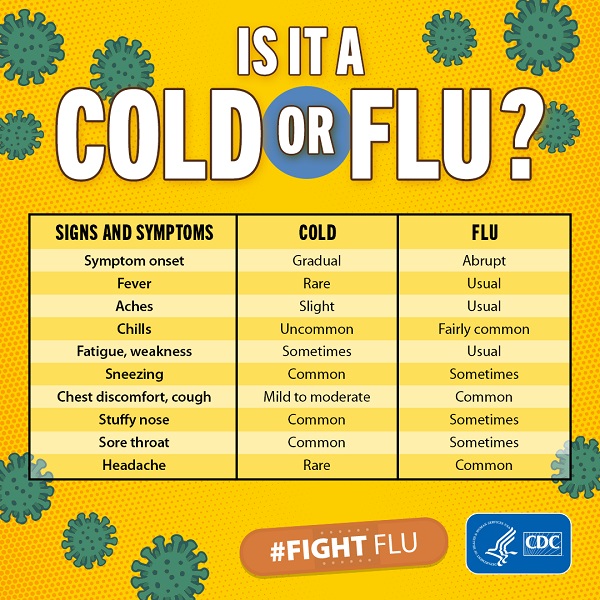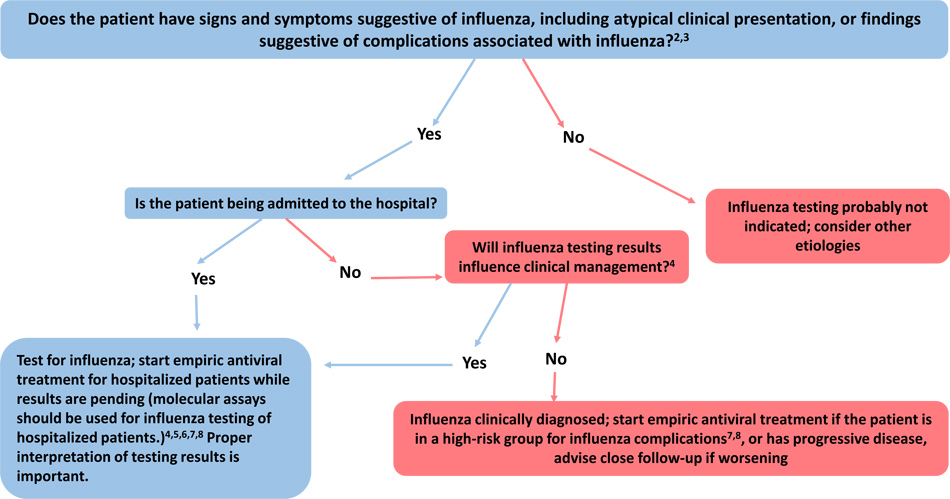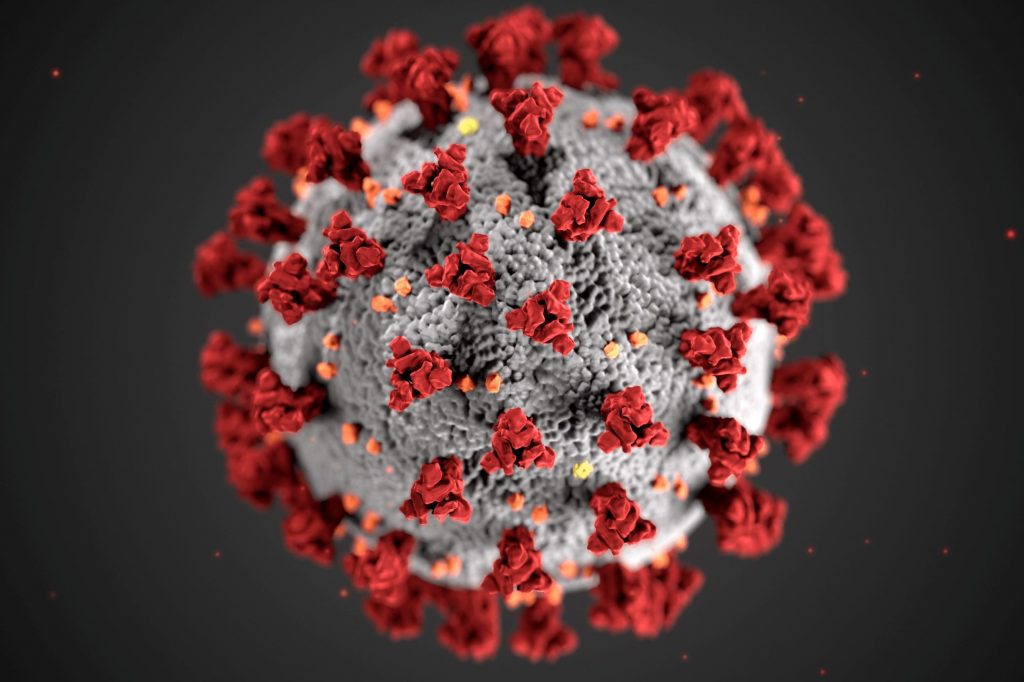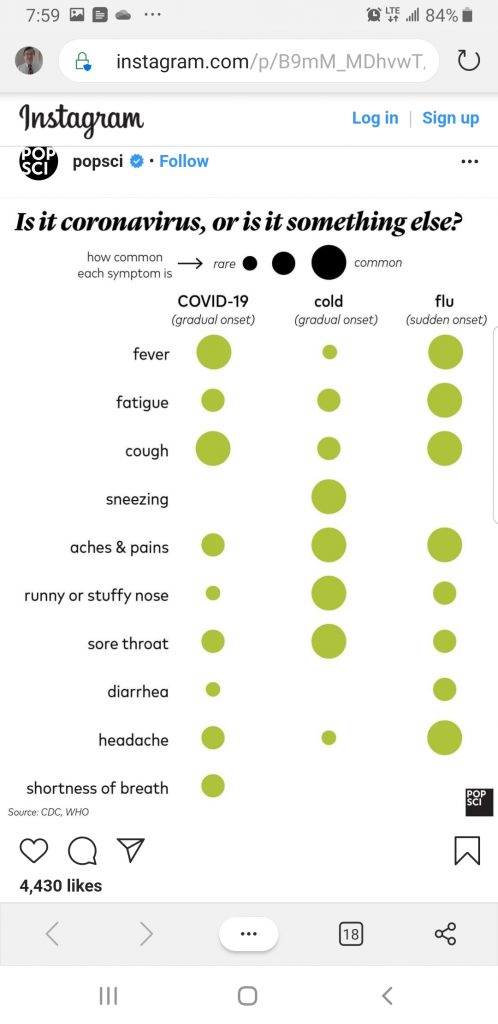Radio talk show host, Rush Limbaugh, has repeatedly said that the Corona virus making its way around the planet is nothing more than a bad cold.
This coronavirus? All of this panic is just not warranted.
I’m telling you, when I’ve told you that this virus is the common cold? When I said that, it was based on the number of cases. It’s also based on the kind of virus this is. Why do you think this is COVID-19? This is the 19th coronavirus! They’re not uncommon. Coronaviruses are respiratory cold and flu viruses. There is nothing about this except where it came from and the itinerant media panic.
A Biothreat from China Is Accomplishing All the Goals of Trump’s Enemies

This of course has drawn the ire of folks predisposed to hate the most popular talk show host in America. My question today is to look at the science and see if Rush is right.
Cold or Flu
Silly me. I actually thought there was a difference between cold and flu but that difference is arbitrary. You really can’t tell. I took a look at the highly partisan website for the Center for Disease Control (sarcasm intended) that describes both.
Because colds and flu share many symptoms, it can be difficult (or even impossible) to tell the difference between them based on symptoms alone. Special tests that usually must be done within the first few days of illness can tell if a person has the flu.
Cold Versus Flu
Flu and the common cold are both respiratory illnesses but they are caused by different viruses. Because these two types of illnesses have similar symptoms, it can be difficult to tell the difference between them based on symptoms alone. In general, flu is worse than the common cold, and symptoms are more intense.

Testing for Flu
A number of flu tests are available to detect influenza viruses in respiratory specimens. The most common are called “rapid influenza diagnostic tests (RIDTs).” RIDTs work by detecting the parts of the virus (antigens) that stimulate an immune response. These tests can provide results within approximately 10-15 minutes, but are not as accurate as other flu tests. Therefore, you could still have the flu, even though your rapid test result is negative. Other flu tests are called “rapid molecular assays” that detect genetic material of the virus. Rapid molecular assays produce results in 15-20 minutes and are more accurate than RIDTs. In addition, there are several more-accurate and sensitive flu tests available that must be performed in specialized laboratories, such as those found in hospitals or state public health laboratories. All of these tests require that a health care provider swipe the inside of your nose or the back of your throat with a swab and then send the swab for testing. Results may take one hour or several hours.
As I mentioned yesterday, they are working on a rapid test for Corona but it is still being developed.
Not everyone that is sick will be tested.
Not necessarily. Most people with flu symptoms are not tested because the test results usually do not change how you are treated.
Your health care provider may diagnose you with flu based on your symptoms and their clinical judgment or they may choose to use an influenza diagnostic test. During an outbreak of respiratory illness, testing for flu can help determine if flu viruses are the cause of the outbreak. Flu testing can also be helpful for some people with suspected flu who are pregnant or have a weakened immune system, and for whom a diagnosis of flu can help their doctor make decisions about their care.
Here is CDC criteria for testing and unless you are in high risk group or hospitalized, chances are you will not be tested.

What is Corona?
Coronaviruses are a group of related viruses that cause diseases in mammals and birds. In humans, coronaviruses cause respiratory tract infections that are typically mild, such as some cases of the common cold (among other possible causes, predominantly rhinoviruses), though rarer forms can be lethal, such as SARS, MERS, and COVID-19.
Coronaviruses constitute the subfamily Orthocoronavirinae, in the family Coronaviridae, order Nidovirales, and realm Riboviria.[5][6] They are enveloped viruses with a positive-sense single-stranded RNA genome and a nucleocapsid of helical symmetry. The genome size of coronaviruses ranges from approximately 27 to 34 kilobases, the largest among known RNA viruses.[7] The name coronavirus is derived from the Latin corona, meaning “crown” or “halo”, which refers to the characteristic appearance reminiscent of a crown or a solar corona around the virions (virus particles) when viewed under two-dimensional transmission electron microscopy, due to the surface covering in club-shaped protein spikes.
Coronavirus

Common human coronaviruses, including types 229E, NL63, OC43, and HKU1, usually cause mild to moderate upper-respiratory tract illnesses, like the common cold. Most people get infected with one or more of these viruses at some point in their lives.
Common Human Coronaviruses
Symptoms of COVID-19
Reported illnesses have ranged from mild symptoms to severe illness and death for confirmed coronavirus disease 2019 (COVID-19) cases.
Coronavirus Disease 2019 (COVID-19)
The following symptoms may appear 2-14 days after exposure.*
* Fever
* Cough
* Shortness of breath
The CDC calling the spread of the novel coronavirus COVID-19 across the United States “inevitable” has understandably triggered a decent amount of anxiety. While COVID-19—which is thought to have originated in Wuhan, China back in December after jumping from an as-yet-unconfirmed animal host—has a troubling fatality rate of around 2 percent (based on current estimates), the vast majority of people who contract the virus experience only mild, cold-like symptoms. In fact, it’s quite possible that the disease’s fatality rate is artificially inflated; with so many confirmed cases featuring mild symptoms, it’s likely that there are many COVID-19 cases going totally unnoticed.
If you get COVID-19, you’re unlikely to get seriously sick and even less likely to die, especially if you are otherwise healthy. But that raises a troubling question that’s difficult to answer: How do you know if your seasonal sniffles might actually be COVID-19? Here’s a handy guide.
How to tell if a cold is COVID-19

If you have no reason to think you’ve been in close contact with someone who is infected with COVID-19, you should proceed as if you have a cold or the flu. You are unlikely to actually have COVID-19 and, if you do, you are unlikely to get particularly sick.
“Although the focus right now is on COVID-19, seasonal flu remains much more common,” says Preeti Malani, the Chief Health Officer and a Professor of Medicine in the Division of Infectious Diseases at the University of Michigan. “In general, all of us should make an effort to stay home and rest while ill. Everyday respiratory viruses spread easily. Wash your hands, cover your cough. If you haven’t done so, it’s not too late to get a flu shot.”
Lastly, Popular Science says stay out of the emergency room.
If you have symptoms of a cold and have traveled to China, South Korea, Japan, or Italy within the last couple of weeks, you should call your doctor or a hospital and ask how to proceed. You should not go to a doctor’s office or emergency room without calling ahead, as this risks exposing vulnerable people while you sit in the waiting room and interact with doctors and nurses.
How bad is COVID-19
Dr. Anthony Fauci, director of the National Institute of Allergy and Infectious Diseases, told lawmakers during a House Oversight Committee hearing Wednesday that COVID-19 — the disease caused by the novel coronavirus — is probably about 10 times more lethal than the seasonal flu.
Coronavirus is 10 times more lethal than the seasonal flu, Trump’s task force immunologist says
(Fauci) did clarify that 10 times figure actually brings the new coronavirus’ fatality rate lower than official estimates, which hover around 3 percent. The flu has a mortality rate of about 0.1 percent, so, when considering the likelihood that there are many asymptomatic or very mild cases that have gone undiagnosed, Fauci places the new coronavirus’ lethality rate at somewhere around 1 percent.
Conclusion
Unless you’re a powerful person—financial or political— a member of an at risk group, or a healthcare worker, you will probably never know if the illness that you had was a cold, flu, or COVID-19 because you won’t have the lab work to check.
As we learn more about this illness, the fatality rate is dropping. More milder cases are being diagnosed and our healthcare system is better than many other countries which means more people will recover. The fatality rate is now down to one percent and I think that it will continue to decline.
Also, I wouldn’t be surprised if a year from now we discover that many people had COVID-19 and never knew it.
President Trump has often compared COVID-19 to the flu…
Give the above, whether you want to call it a cold or flu, Rush Limbaugh was correct. “Coronaviruses are respiratory cold and flu viruses.” Thus, COVID-19 is a really bad cold.
